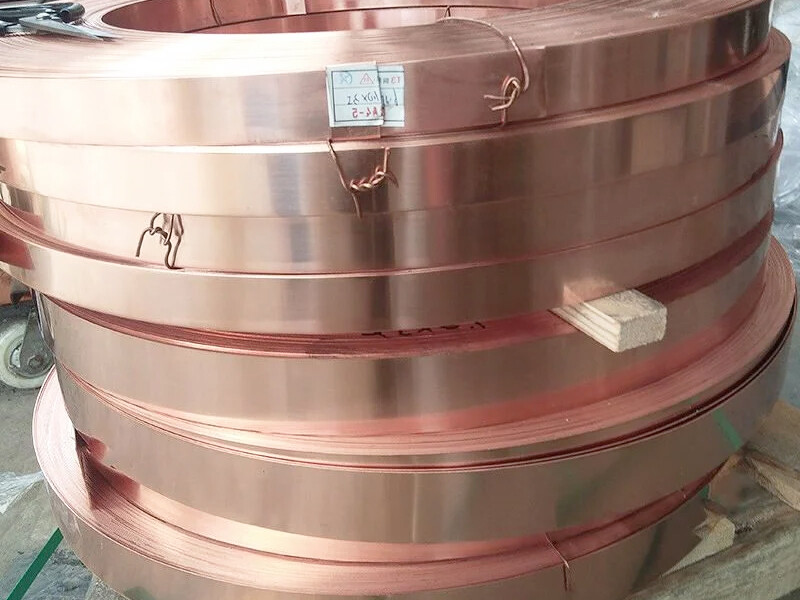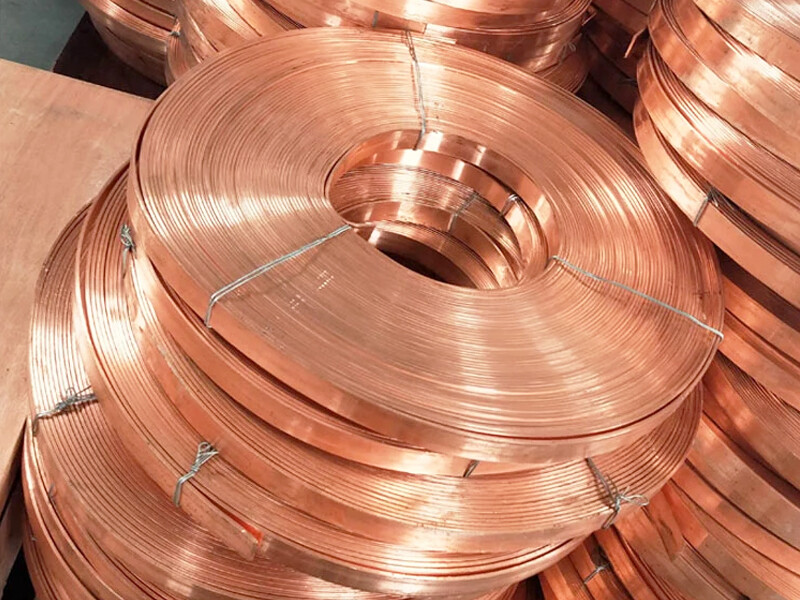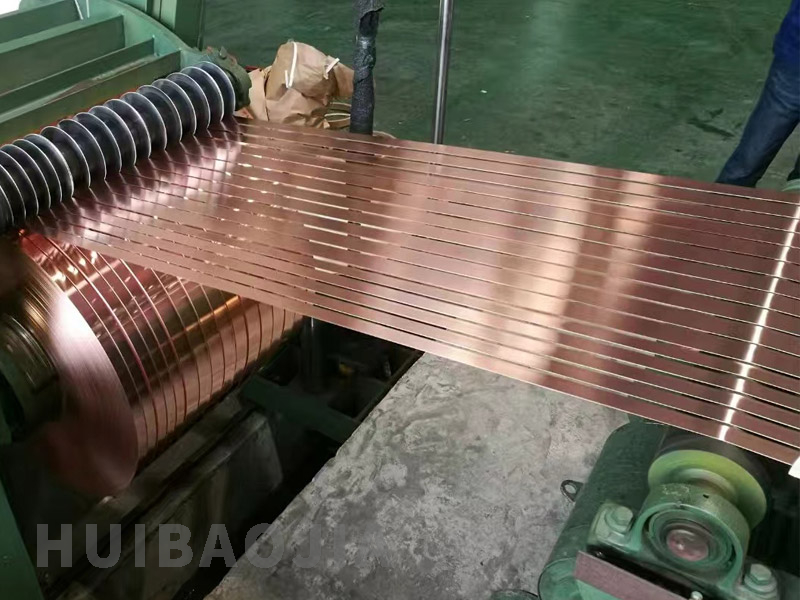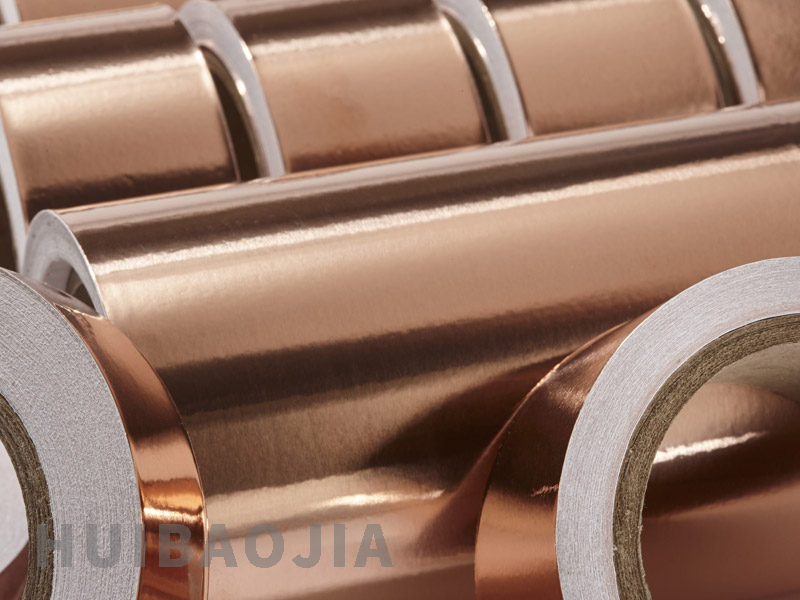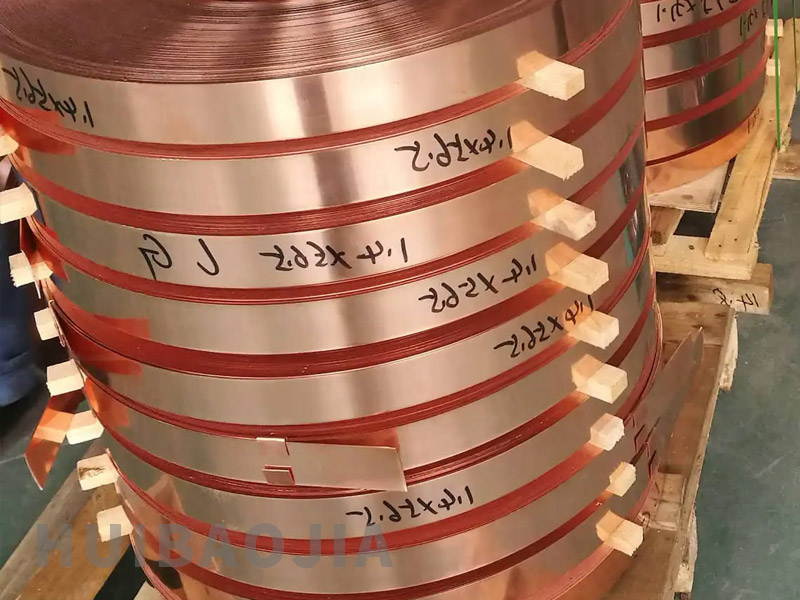C71500 Copper Plate
- Thickness: 0.5 mm – 100 mm .
- Width: 500 mm – 2,000 mm .
- Length: 1,000 mm – 6,000 mm .
- Tolerances: Governed by ASTM B171/B171M for pressure vessels, with thickness tolerances up to 25% greater than standard specifications for plates .
C71500 Copper Strip
- Thickness:
- Standard Strip: 0.0127 mm – 0.254 mm (0.0005" – 0.010") .
- Specialized Foil (for marine markers): 0.05 mm – 1.0 mm .
- Width: Up to 304.8 mm (12") for general strip ; 50 mm – 500 mm for foil .
- Surface Finish: Available in annealed or semi-hard tempers for formability .
International Standards
C71500 plates and strips comply with the following standards:
ASTM Standards (Primary)
- ASTM B122/B122M: Covers copper-nickel alloy plate, sheet, strip, and rolled bar (e.g., UNS C71500) for general and pressure applications .
- ASTM B171/B171M: Specifies requirements for plates and sheets used in pressure vessels, condensers, and heat exchangers .
- ASTM B466/B466M: Applies to seamless pipes and tubes (though primarily for tubular products, it references C71500 for welded applications) .
European and ISO Standards
- EN 12449: General specifications for copper and copper alloys, including Cu-Ni alloys .
- EN 1652: Standards for copper alloy strips and thin plates .
- ISO 1634 Series: Guidelines for chemical and physical testing of copper-nickel alloys .
Chemical Composition
The primary elements in C71500 are copper (Cu) and nickel (Ni) with trace amounts of iron (Fe), manganese (Mn), and other controlled impurities. The composition varies slightly across standards but generally adheres to the following ranges:
- Copper (Cu): 65.0%–71.0%
- Nickel (Ni): 28.0%–33.0%
- Iron (Fe): ≤1.0% (typically 0.4%–1.0%)
- Manganese (Mn): ≤1.0%
- Impurities: Zinc (Zn), lead (Pb), sulfur (S), phosphorus (P), and carbon (C) are restricted to ≤0.05% each to enhance weldability and corrosion resistance .
Mechanical Properties
Mechanical properties depend on temper (e.g., annealed, cold-worked) and testing conditions. Key parameters include:
- Tensile Strength:
- Range: 372–690 MPa
- Typical values: 440–580 MPa (annealed) , 550 MPa (as-reported) .
- Yield Strength:
- Range: 125–483 MPa
- Typical values: 240–276 MPa (annealed) , up to 415 MPa (cold-worked) .
- Elongation:
- Range: 30%–45%
- Typical value: ~30% (annealed) .
- Hardness:
- Brinell Hardness (HB): ~100 HB
- Vickers Hardness (HV): ~120 HV .
- Other Properties:
- Density: 8.94 g/cm³
- Melting Point: 1170°C–1240°C
- Thermal Conductivity: 29–40 W/m·K
- Electrical Conductivity: 3%–25% IACS (varies with processing) .
Production process and product advantages of C71500 copper plate and copper strip
I. Production process of C71500 copper plate
Key process flow
Raw material preparation: Select high-purity copper (about 70%) and nickel (about 30%), supplemented with trace elements such as iron and manganese, and ensure that the chemical composition meets the standard through precise proportioning.
Smelting: Use medium-frequency induction furnace or electric furnace, control the temperature at 1200-1300℃, reduce oxidation through argon protection, and add deoxidizer (such as phosphor copper alloy) to improve the purity of the melt.
Casting: The melt is poured into a mold or horizontal continuous casting machine to form a billet. The continuous casting process can reduce shrinkage and segregation.
Heat treatment: Annealing temperature 650-750℃, keep warm for 1-2 hours, furnace cooling or air cooling to eliminate internal stress and refine grains; solution treatment (950-1050℃) is used to optimize high temperature performance.
Surface treatment: pickling (sulfuric acid or hydrochloric acid solution, 40-60℃) to remove oxide scale, mechanical polishing or electroplating (nickel/tin plating) to improve corrosion resistance and finish.
Key process parameters
Melting temperature: 1200-1300℃ to ensure alloy uniformity.
Annealing temperature: 650-750℃ to balance plasticity and strength.
Hot working temperature: 700-900℃ to avoid grain coarsening.
Cold rolling deformation rate: controlled at 30-70% to optimize the work hardening effect.
2. Production process of C71500 copper strip
Core process
Melting and continuous casting: horizontal continuous casting or upward continuous casting, temperature 1100-1250℃, charcoal covering to prevent oxidation, continuous drawing to form strip.
Rolling processing:
Hot rolling: heat the strip to 700-900℃, roll to 4mm thick, and cool in coils.
Cold rolling: Rough rolling (to 1.5mm), intermediate rolling (to 0.7mm), finishing rolling (to 0.2-0.8mm), with annealing (550-650℃) in between to restore plasticity.
Surface treatment: Milling (remove 0.25-0.5mm on each side) to eliminate surface defects, pickling (dilute sulfuric acid) and passivation to improve cleanliness.
Shearing and coiling: Cut into finished products of different widths (50-500mm) and thicknesses (0.05-1.0mm) according to demand.
Process characteristics
Continuous production: Horizontal continuous casting and rolling are integrated to improve efficiency and reduce energy consumption.
Precision control: AGC (automatic thickness control) technology ensures a strip thickness tolerance of ±0.005mm.
Surface quality optimization: Bright annealing (nitrogen/hydrogen protection) to make the surface roughness ≤0.2μm.
3. Product performance indicators and advantages
Core performance of C71500 copper plate
Physical properties: density 8.94g/cm³, melting point 1170-1240℃, thermal conductivity 29W/(m·K), electrical conductivity 5-7% IACS.
Mechanical properties: tensile strength 415-550MPa, yield strength 105-280MPa, elongation 20-40%, hardness 80-150HB.
Corrosion resistance: corrosion rate ≤0.02mm/year in seawater and acidic media, outstanding anti-biological fouling performance.
Unique advantages of C71500 copper strip
Dimensional accuracy: thickness range 0.05-1.0mm, width 50-500mm, ultra-thin strips (0.05mm) can be customized.
Processing adaptability: 180° bending without cracks, suitable for precision forming such as stamping and bending.
Electrical properties: Resistivity 0.35µΩ·m, suitable for high-frequency signal transmission and electromagnetic shielding.
Q1:Do you provide samples? Is it free or extra?
A1:Yes, we can provide samples free of charge and the customer will pay the freight.
Q2:What if I don't have export experience ?
A2:We have reliable forwarder agent which can ship items to you by sea/air/Express to your doorstep. Any way, we will help you choose the most suitable shipping service.
Q3:How long is your lead time?
A3:If it is in stock, it is usually 5-10 days. Or, if there is no inventory, 15 days, depending on the quantity.
Q4:What are your terms of payment?
A4:30% T/T deposit in advance, 70% T/T balance within 5 days after B/L copy, 100%.Irrevocable L/C at sight, 100% Irrevocable L/C after receive B/L 30-120 days, O/A.
Q5:How is your technical support?
A5:We provide lifetime online support through Whatsapp/ Skype/ Wechat/ Email. Any problem after delivery, we will offer you call anytime.
Welcome To Your Inquiry
What can we help you?
RELATED PRODUCTS






